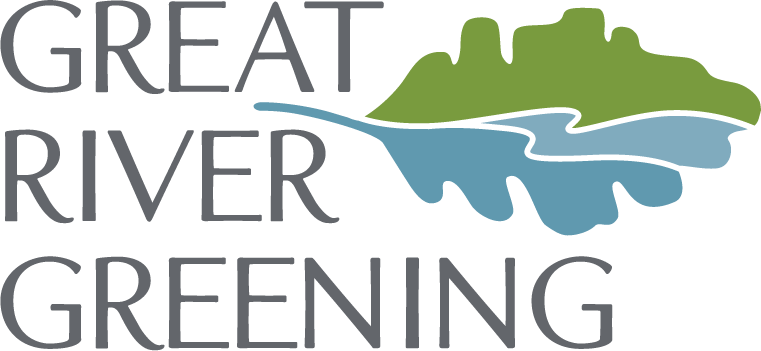Our Not-So-Secret Weapon in the Fight Against Invasive Species – Goats!
If you’re hiking through Lebanon Hills Regional Park in Eagan or Schwarz Pond Park in Rosemount this month, you just may run into some unexpected park visitors.
Great River Greening is contracting with Diversity Landworks and Goat Dispatch to mobilize herds of browsing goats in our work to remove invasive species and restore the land at these sites.
Why goats?
Grazing goats are a natural, environmentally friendly way to control the spread of invasive species, and their unique diets make them perfect for the job. Goats eat the tips of twigs, buds, and bark off invasive species, including buckthorn. This work opens up the understory, allowing native plants to grow.
The result!
Through their browsing, goats damage and stress the invasive species, making it less likely for them to re-sprout and spread. Over time, repeated goat grazing will kill plants like buckthorn – a positive for all the native plants that will take its place!
“These park areas have had a lot of their big, maybe decades-old buckthorn shrubs removed before the goats are brought in,” explained Becca Tucker, Great River Greening’s Twin Cities Metro Program Manager, “The goats add that next level of habitat management without any chemicals or loud and dangerous machines, existing in the park right alongside hikers and other folks enjoying the space.”
The goats will be at both locations through June, and potentially through September at Lebanon Hills, so be sure to visit if you’re out for a spring hike. And if you’re visiting Lebanon Hills, be on the lookout the “Chew Crew” – a team of volunteers coordinated by Dakota County to help monitor the fence line and answer questions.
Photo Credits: Three goats in a field (photographer unknown); Goats grazing on invasive buckthorn at Lebanon Hills Regional Park (Becca Tucker).
Thank you to our partners and funders:
Dakota County
City of Rosemount
Outdoor Heritage Fund (OHF), as appropriated by the Minnesota State Legislature and recommended by the Lessard-Sams Outdoor Heritage Council (LSOCHC)


